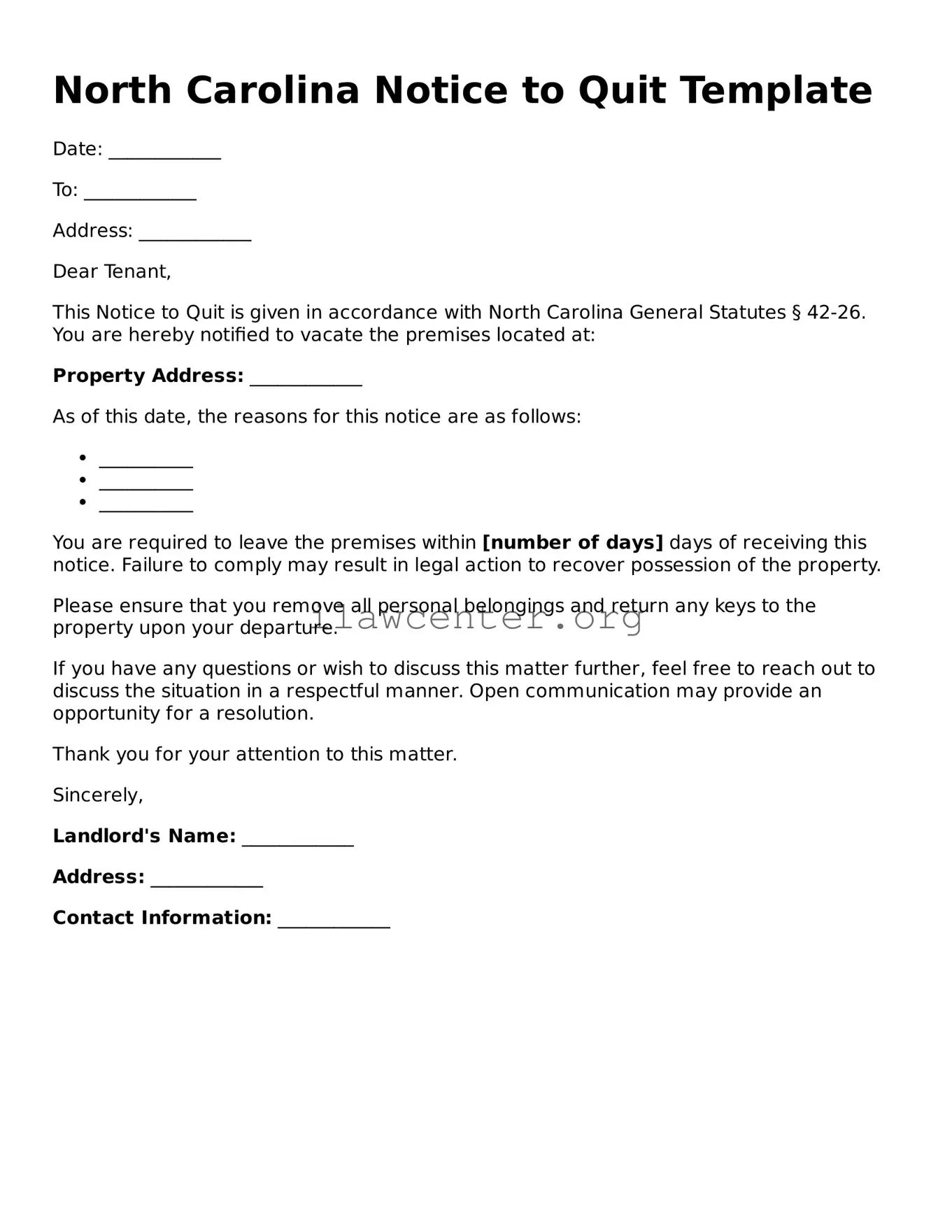Instructions on Utilizing North Carolina Notice to Quit
Once you've gathered the necessary information and documents, you can start filling out the North Carolina Notice to Quit form. This form is important to communicate with the tenant about the need to vacate the property. Completing it accurately ensures your message is clear and helps facilitate the next steps in the process.
- Begin by entering the date at the top of the form.
- Write your full name and address in the designated section as the landlord or property owner.
- Provide the tenant's name and their current address next on the form.
- Specify the reason for the notice. Clearly state whether it is for non-payment, lease violation, or another reason.
- Indicate the total amount owed if it is a non-payment issue.
- List the number of days the tenant has to vacate the property, as required by North Carolina law.
- Sign the form to confirm you are the landlord or authorized agent.
- Include your printed name below your signature.
After completing the form, it’s crucial to deliver it to the tenant properly. Make sure to follow local delivery requirements and keep a copy for your records. This will set the stage for the next actions you may need to take.
